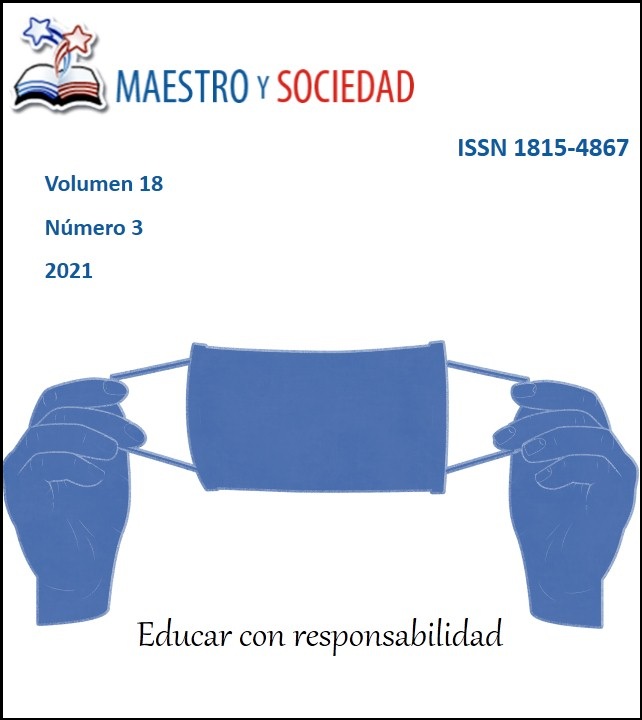Etnobotanical, sustainable development and environment conscience awareness in Peruvian matucana peoples
Array
Keywords:
Ethnobotanical, Environment, Environment education, Environment awareness, Sustainable developmentAbstract
This research aimed to establish the relationship between ethnobotany and environmental awareness education of the inhabitants of Matucana district, Huarochirí province, Lima department. A mixed prevalence methodology was used to address the research object, integrating methods of qualitative and quantitative approaches, including but not least observation, documentary review, synthesis analysis, non-parametric statistical methods and Pearson's coefficient or statistical test r. It was found that theoretical approaches have delved into methodological, useful, cognitive and ethical elements but it is important to discipline the relationship of Ethnobotany with the environmental consciousness conceived from its equivalence and enriching analogy that enhances the actions of human beings and that there is a profound relationship between ethnobotany and environmental awareness. Etnobotánica, Medio Ambiente, Educación ambiental, Conciencia ambiental, Desarrollo sostenible.
References
2. Alban Castillo, J. A. (1998). Etnobotánica y Conservación en la Comunidad Andina de Pamparomas, Huaylas, Ancash, Perú. (Tesis de Magíster). UNMSM, Lima, Perú.
3. Arenas, P. (1981). Etnobotánica Lengua Maskoy. Concejo Nacional de Investigación Científica y Técnica (CONICET), Argentina.
4. Ayala Flores, F. (1984). Notes on Some Medicinal and Poisonous Plants of Amazonican Perú. Editorial Assistant Diana Gunter.
5. Barrera Marín, A., Barrera Vásquez, A., y López Franco, R. M. (1976). Nomenclatura etnobotánica maya: una interpretación taxonómica. Instituto Nacional de Antropología e Historia, SEP. Centro Regional del Sureste. México.
6. Barrientos Jiménez, E. y Valer Lopera, L. (2001). Teoría y Metodología de la Investigación. Programa de Complementación Pedagógica. Lima: UNMSM.
7. Berlin, B. (1992). Ethnobiological classification. Principles of categorization of plants and animals in traditional societies. Princeton University Press, Princeton.
8. Brack, Antonio. (1977). El ambiente en que vivimos. Editorial Salesiana. Lima.
9. Comisión de la Carta de la Tierra. (2000). La Carta de la Tierra. Unesco. París.
10. Conam. (2005). Diagnóstico ambiental participativo. Recuperado de http://www.conam.gob.pe/documentos.
11. Constitución Política del Perú. (1993). Lima.
12. García Gómez, J. y Rosales, N. (2000). Estrategias Didácticas en Educación Ambiental. Madrid: Editorial Aljibe S. L.
13. Gary, J. (2000). Etnobotánica Manual de Métodos. Editorial Nordan Comunidad. Montevideo.
14. Garza, A. (1988). Manual de Técnicas de Investigación para Estudiantes de Ciencias Sociales. México: Editorial Harla.
15. Gómez, A. (2003). Desarrollo Sustentable. ¿Qué entendemos por desarrollo Sustentable? Recuperado de http://w.w.w.sustentable.c/portada/PreviewSitioPage.asp?hotmail.
16. Harris, M. (1979). El desarrollo de la teoría antropológica: una historia de las teorías de la cultura. México: Siglo XXI.
17. Hernández Sampieri, R., Fernández Collado, C., y Baptista Lucio, P. (2001). Metodología de la Investigación. México: Editorial McGraw-Hill Interamericana.
18. Holguín, F., Hayashi, L. (1974). Elementos de Muestreo y Correlación. Textos Universitarios, Universidad Nacional Autónoma de México. México.
19. ICEB. (2009). V Congreso Internacional de Etnobotánica “Tradiciones y transformaciones en Etnobotánica” Recuperado de http://iceb09.blogspot.com/2009/05/v-congreso-internacional- de.html.
Published
How to Cite
Issue
Section
License
This journal provides immediate open access to its content, based on the principle that offering the public free access to research helps a greater global exchange of knowledge. Each author is responsible for the content of each of their articles.



























 Universidad de Oriente
Universidad de Oriente 